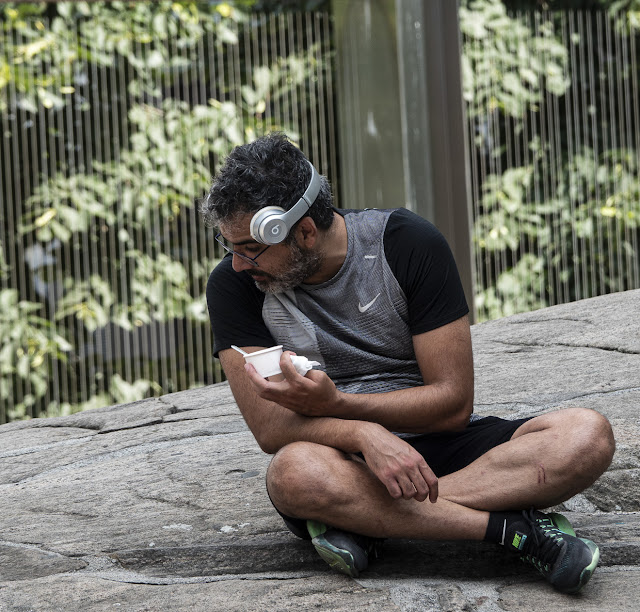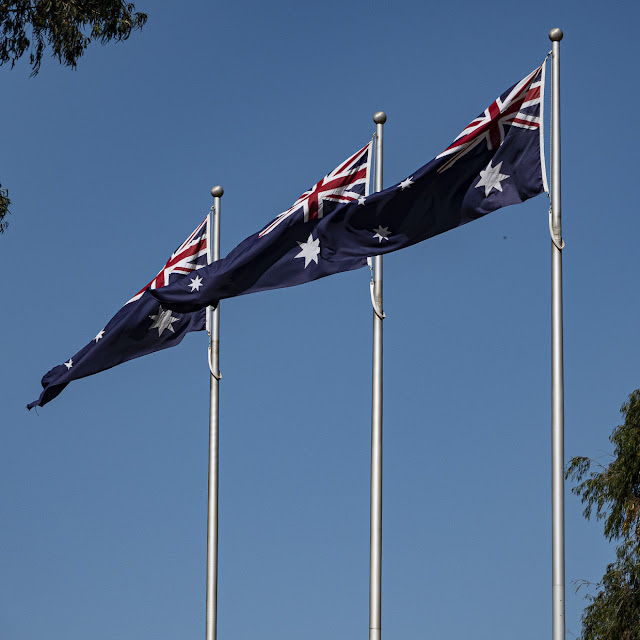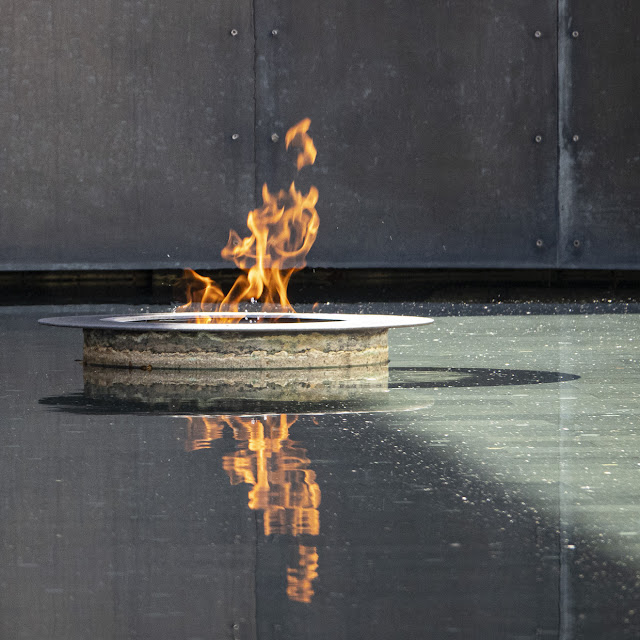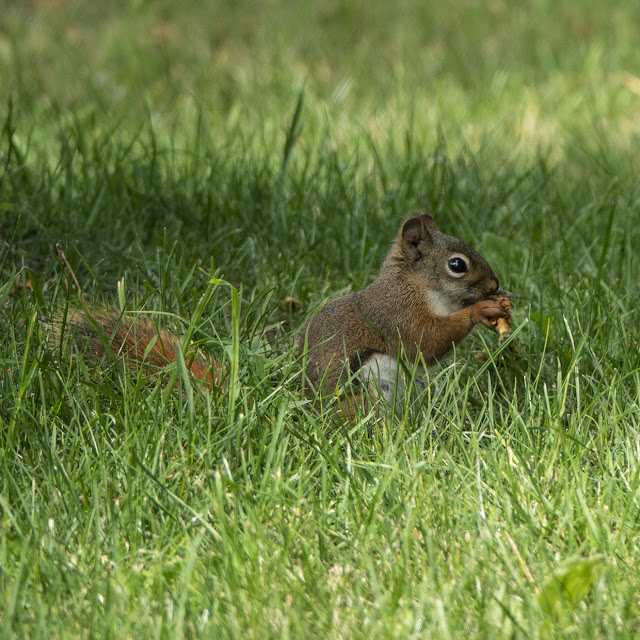On Sunday, January 31, 2021, I gave the following presentation (via Zoom) to the members of St. Andrew's Presbyterian Church in Picton, Ontario. It was a privilege and an honour to once again share my thoughts with the good people of St. Andrew's. I thank the Reverend Lynne Donovan for her friendship and support.
Sacred Pauses & Healing Ritual
A Pre-Lenten Reflection by Larry Tayler
St. Andrew’s Presbyterian Church
Picton, Ontario
31 January 2021
Reading Time: 30 minutes (approximately)
Lilacs In September
by Katha Pollitt
Shocked to the root
like the lilac bush
in the vacant lot
by the hurricane –
whose black branch split
by wind or rain
has broken out
unseasonably
into these scant ash-
colored blossoms
lifted high
as if to say
to passersby,
What will unleash
itself in you
when your storm comes?
Let me repeat that last line:
What will unleash
itself in you
when your storm comes?
We’re about to start Lent, that forty-day period when Christians traditionally prepare themselves for Easter. It is an opportunity to ponder the central paradox of Christianity: that from the shock and despair following the death of Jesus on Good Friday comes hope and renewal at His resurrection three days later. It embraces both our experience of mortality and our hopes for eternity. It is a time to mourn loss and embrace rebirth, to wait and hope, to relinquish and receive, but mostly to pause. Sacred pausing. And it is a time to pray and perform ritual. Healing ritual.
Thus the title of this presentation, Sacred Pauses & Healing Ritual.
During the last year, we have been living through very strange times indeed. The COVID pandemic has disrupted the very fibre of our lives. In fact, I considered calling this presentation, Lent in the Time of COVID & COVID in the Time of Lent. It has been a time of profound dislocation and isolation. We have all hit the pause button on our lives, our assumptions, and our expectations. And, we have also been handed a gift – the opportunity to consider that, while the suspension of norms we once took for granted can be painful, it is also an opening for renewal and transformation. Consider for a moment how the pandemic, with all its sufferings and challenges, has stimulated the global scientific community to co-operate in extraordinary ways to speed the creation of vaccinations that are countering the virus. This co-operative legacy promises to serve humanity abundantly in the decades ahead. In other words, from the depths of the pandemic has risen hope for the future. A paradox not unlike the paradox of Christianity itself. In the pauses – the sacred pauses – of this past year, we have not only experienced grievous wounds, we have also rethought how we live our lives. And in doing that, we have all improvised our own healing rituals to cope and create.
And thus back to the title, Sacred Pauses and Healing Ritual.
I use poetry to help me understand the world, especially when I’m confused, which is often these days, so let me reread the poem that I began with, Katha Pollitt’s Lilacs in September. Pollitt is an American poet and essayist. I met this poem in the pages of Emily Urquhart’s recent book The Age of Creativity: Art, Memory, My Father, and Me, a tribute to her father, the Canadian artist Tony Urquhart. As I reread it, I hope you will detect the rhythms and themes that I am exploring today.
Lilacs In September
by Katha Pollitt
Shocked to the root
like the lilac bush
in the vacant lot
by the hurricane –
whose black branch split
by wind or rain
has broken out
unseasonably
into these scant ash-
colored blossoms
lifted high
as if to say
to passersby,
What will unleash
itself in you
when your storm comes?
“What will unleash itself in you when your storm comes?” What a deliciously provocative question! It does not ask if there will be a storm; it simply states that there will be one. Furthermore, it will not be just any storm – it will be your storm, a unique storm, tailored to your unique circumstances, vulnerabilities, and fears. And the poem does not ask if your individual storm will unleash anything inside you; once again, it simply states that something will be unleashed. And there is no adjective describing this something that will be unleashed in you – it could run the emotional gamut from anguished to zealous.
So, please join me in exploring these Lenten, pandemic times by focusing on sacred pauses and healing ritual.
Let’s start with Sacred Pauses.
The concept of pausing is an important feature of many faith traditions. As the Buddhist nun Pema Chödrön says, “When we pause, [we] allow a gap and breathe deeply. We can experience instant refreshment. Suddenly, we slow down, look out, and there’s the world.”
I first became aware of sacred pauses from the Melbourne lawyer and human rights advocate, Nyadol Nyuon, who was interviewed in September, 2020, by Meredith Lake on the Australian Broadcasting Corporation program Soul Search. Ms. Nyuon, whose family arrived in Australia as refugees in 2005 after having fled civil war in Sudan, spoke to Dr. Lake about what it was like to go from being a much-sought-after international speaker and consultant to being locked down in Melbourne with her family at the beginning of the pandemic.
Here’s what Ms. Nyuon wrote about that experience in a subsequent Guardian essay:
“What I want to salvage from the wreck left by this pandemic is a fresh point of view and a new way of life. I am borrowing the idea that this...is a ‘sacred pause’. I do not want to return to the rush of my life as it was before the plague. [This] is an opportunity to rebuild a life...to re-examine our lives while the noise of the world has turned down. Perhaps now we can hear whatever it is that our inner voice has been struggling to tell us as it tried to compete with the buzz of a busy life in a busy world...We can now weigh up what truly belongs and what can be left in the life before the plague.”
The concept of sacred pauses has a long history, both as a spiritual practice and a secular tool, for re-evaluating and re-assessing the direction of our lives.
Observant Muslims, for example, have five sacred pauses every day to pray and stay connected with God – dawn; midday; afternoon; sunset; and nighttime.
The late Benedictine nun Sister Macrina Wiederkehr wrote in her 2008 book, Seven Sacred Pauses/Living Mindfully Through the Hours of the Day, that by consciously pausing seventimes each day to examine what we are doing – and asking ourselves how what we are doing is contributing to our well being – we would be raising our self-awareness, while also caring for the wider community.
Sister Macrina’s seven sacred daily pauses are:
• Dawn – The Awakening Hour
• Mid-Morning – The Blessing Hour
• Noon – The Hour of Illumination
• Mid-Afternoon – The Wisdom Hour
• Evening – The Twilight Hour
• Bedtime – The Great Silence
• After Midnight – The Night Watch
The psychologist Tara Brach wrote in a December, 2014, Psychology Today article entitled The Sacred Pause that when we consciously place such pauses in our days, we are taking the first step towards what she calls, “Radical Acceptance” – acceptance of both ourselves and our circumstances. When we resume our activities, we do so with increased self-awareness and ability to make choices.
Here’s Dr. Brach’s description of that process:
“...Often the moment when we most need to pause is exactly when it feels most intolerable to do so. Pausing in a fit of anger, or when overwhelmed by sorrow or filled with desire, may be the last thing we want to do. Pausing can feel like falling helplessly through space – we have no idea what will happen...Through the sacred art of pausing, we develop the capacity to stop hiding, to stop running away from our experience. We begin to trust in our natural intelligence, in our naturally wise heart, in our capacity to [be] open to whatever arises.”
Let me repeat that paragraph, because it touches on many powerful themes:
“...Often the moment when we most need to pause is exactly when it feels most intolerable to do so. Pausing in a fit of anger, or when overwhelmed by sorrow or filled with desire, may be the last thing we want to do. Pausing can feel like falling helplessly through space – we have no idea what will happen...Through the sacred art of pausing, we develop the capacity to stop hiding, to stop running away from our experience. We begin to trust in our natural intelligence, in our naturally wise heart, in our capacity to [be] open to whatever arises.”
Interestingly, most of the sources I consulted about sacred pauses don’t define their understanding of the word ‘sacred’. For the purposes of this presentation, here’s my working definition of sacred:
Sacred is the quality that transforms our lived experience into a wider awareness, an awareness that we are all connected with each other and to higher power – what I choose to call God. It is that transcendent quality that transports us beyond ourselves to a more welcoming and expansive consciousness.
Let me repeat that. Sacred is the quality that transforms our lived experience into a wider awareness, an awareness that we are all connected with each other and to higher power – what I choose to call God. It is that transcendent quality that transports us beyond ourselves to a more welcoming and expansive consciousness.
It is not a huge leap to extend this concept of sacred pauses beyond daily observations to include all-embracing re-assessments of our lives, our relationships, and our broader world. Which means that such pauses are ideally suited for times when the scope of our lives has been narrowed. In other words, times such as now, when the Lenten season and the COVID season coincide. Some might say collide. And some might even say collude.
One of the most intriguing characteristics of sacred pauses is that they frequently have rituals attached to them, either external rituals created by faith communities, or micro-scaled internal rituals that we create for ourselves. In this next section, I want to explore not only ritual, specifically healing ritual, but also the connection between ritual and sacred pauses.
Let me start with an anecdote. Bill, my quilt-making husband, and I have been married for seven years. Before we met eight years ago, both of us had lost beloved husbands to devastating illness. As Bill so eloquently phrased it when we started exploring a relationship, “There will always be four of us in the room.” So, there is a strong spiritual element in our relationship, which for me is one of its great strengths. That spiritual element often manifests itself during dinner. We rarely eat breakfast or lunch together, but having a shared meal at the end of the day has become a tradition. For me, it is both a sacred pause and a healing ritual. We typically eat around 7:30 and it’s usually at least an hour before we finish – the meal and the conversation. At the end of September last year, shortly after we had moved back to Prince Edward County, we had a particularly thought-provoking discussion. It got started when I talked about how I had adapted my morning habits to life in our new home – waking up, feeding the animals, cleaning the litter box, emptying the dishwasher, reading some poetry, and so forth. After breakfast, I brew a really strong double dose of espresso and read The Globe & Mail. That’s what many mornings look like for me. Bill was of the opinion – and I hope I’m not putting words into his mouth – that maybe these morning habits had become a tad – um – inflexible. And I understand how my behaviour can be interpreted that way. From my side of the table, however, these behaviours aren’t so much inflexible habits as they are comfortable rhythms. They help me get my day started. They give me a framework. I’ve always been an anticipator and a planner – ‘future focused’, as a teaching colleague once gently observed. These morning routines release my mind to think and wander and explore while I’m doing other things. And despite looking fixed and unchanging, they do, in fact, morph and adapt.
As this conversation with Bill about habit and routine continued, it took a remarkable turn: I realized that if I saw these habits and routines as ritual, I was also reframing them as sacred. Not a bad dinner conversation to have with your husband!
By reframing our lives and actions as sacred, we honour the divine spark within ourselves and within others. Thus, the journey from habit, to routine, to ritual puts us on a divine path – a healing path – and puts us in divine company – healing company. Thus, healing ritual. The kind of rituals that get me through the rough spots, the times when I don’t know what to do. My rituals help me put one foot in front of the other. They help give me a short-term sense of direction and purpose that allows my mind to quietly work in the background resetting the larger compass of my life. They connect me to an immediate, practical reality that does not disappear simply because I’m troubled. There’s something about having Edna, our sixty-pound Basset Hound, nuzzle my eye socket first thing in the morning because she needs to pee that transcends all other considerations. Edna brings an exquisite sense of ‘NOW!’ to my life. She is a powerful reminder that the world beyond my own life calls on me to get out of bed and do the things I need to do in the service of my loved ones and my community. I’ll cycle back to the larger dilemmas that are troubling me later after my subconscious has had a chance to work on them. Meanwhile, I’ve got a Basset Hound to walk!
So, yes, walking Edna is a healing ritual. Emptying the dishwasher is a healing ritual. Cleaning the kitty litter box is a healing ritual. These actions put me in touch with a reality beyond myself. They heal me while simultaneously giving my soul the breathing space it needs to ponder the larger issues of life.
Joseph Campbell, the wonderfully wise philosopher and mythologist, said it much more elegantly:
“A ritual is the enactment of a myth. By participating in the ritual, you are participating in the myth. And since myth is a projection of the depth wisdom of the psyche, by participating in a ritual...you are being... reminded of the wisdom of your own life.”
What a brilliant definition of healing ritual – “being reminded of the wisdom of your own life.”
Which brings me to one very specific healing ritual I want to commend to you. It is a healing ritual that embodies sacred pause. It embraces both Lenten tradition and COVID experience. It allows us to grieve what we have lost and reclaim hope for the future.
The healing ritual I commend to you is the sabbatical. The word has its origins in the Hebrew word shabbāth, meaning ‘rest’. The Bible is very clear about telling us to come to a halt regularly and to rest. Exodus, Chapter 34, verse 21: “Six days thou shalt work, but on the seventh day, you shall rest.” The Bible takes this day of rest very seriously indeed. Exodus, Chapter 31, verse 15 states sternly, “Whoever does any work on the Sabbath day shall be put to death.” Think about that the next time you do laundry or mow the lawn on a Sunday!
The Bible commands us to call a halt, regularly and completely. The season of Lent is a perfect time for us to do that – and so is the season of COVID. Both seasons provide us with the opportunity to reflect on what is happening in our lives: to acknowledge and tend our wounds; to recognize and celebrate our accomplishments; to accept and work through our shortcomings; to treasure and share our joys; and to make loving, conscious assessments about where our lives are and to make equally loving, conscious choices about where to go next.
So – I am commending to you this challenge: that you reframe your experience of COVID and of Lent as a personal sabbatical – a sacred pause and a healing ritual.
Let me finish by reading The Facts of Life, a poem by the Irish poet and theologian Pádraig Ó Tuama. It is rich in the themes of both sacred pause and healing ritual.
The Facts of Life
by Pádraig Ó Tuama
That you were born
and you will die.
That you will sometimes love enough
and sometimes not.
That you will lie
if only to yourself.
That you will get tired.
That you will learn most from the situations
you did not choose.
That there will be some things that move you
more than you can say.
That you will live
that you must be loved.
That you will avoid questions most urgently in need of
your attention.
That you began as the fusion of a sperm and an egg
of two people who once were strangers
and may well still be.
That life isn’t fair.
That life is sometimes good
and sometimes better than good.
That life is real
and if you can survive it, well,
survive it well
with love
and art
and meaning given
where meaning [is] scarce.
That you will learn to live with regret.
That you will learn to live with respect.
That the structures that constrict you
may not be permanently constricting.
That you will probably be okay.
That you must accept change
before you die
but you will die anyway.
So you might as well live
and you might as well love.
You might as well love.
You might as well love.
Thank you.







































